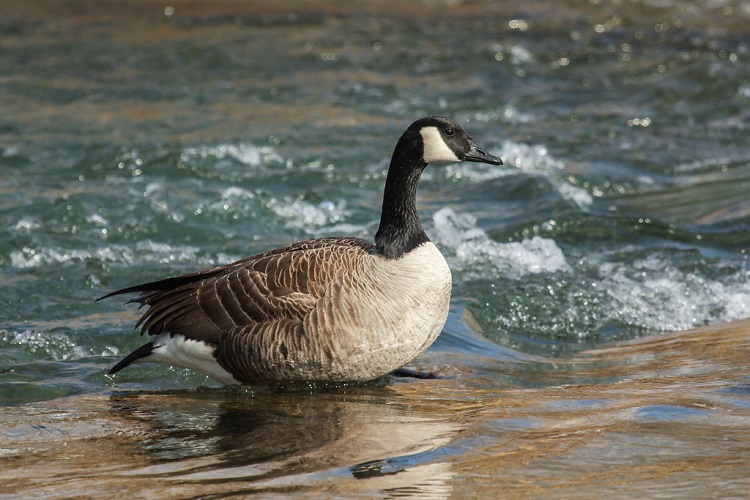Geese are large birds that live both in the wild and in captivity, where people harvest them for their feathers, down, and meat.
Some geese are protected, including those in the U.K. and Canada, and although they can get aggressive during the mating season, they’re usually harmless and don’t pose a threat to humans.
This post is going to cover everything you need to know about geese, including the different goose species, how big these birds can actually get, and their migration patterns.
Keep on reading to find out more!
About The Goose
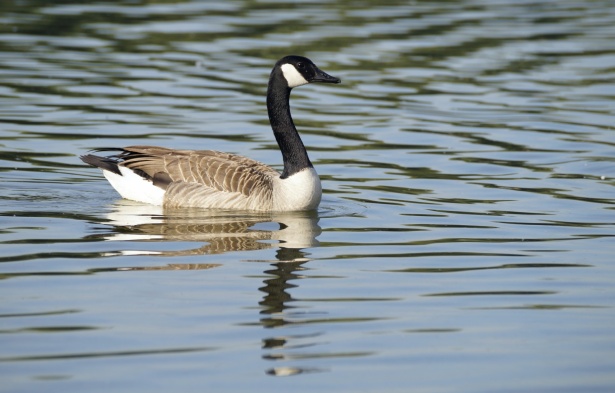
A goose, plural geese, is a waterfowl species that belongs to the Anatidae family. Geese, who are large, heavy-bodied birds, are larger than ducks but smaller than swans, and depending on the genus the species falls into, they can range in color and size.
The genera Anser (the Grey geese and White geese) and Branta (the Black geese) both consist of many different subspecies, including some of the following:
- Canada goose (B. canadensis)
- Greylag goose (Anser anser)
- White-fronted geese (A. erythropus and A. albifrons)
- Barnacle goose (B. leucopsis)
- Snow goose (Chen caerulescens)
- Brant (B. bernicla)
- Nene (B. sandvicensis)
Some other birds have goose as part of their names; however, these birds are related to shelducks which are a subfamily of the Anatidae, along with the swan and duck.
Male ducks, known as ganders, are bigger than female geese, but unlike ducks, which differ in color, the male and female geese have similar colorations.
Depending on where a group of geese is or how they are flying, we can give the group a different name.
When geese form groups on the ground, they are a gaggle, but when the birds are flying, they are either a skein, a team, or a wedge. The only exception is when the geese are flying close together, which we then refer to as plump.
Etymology
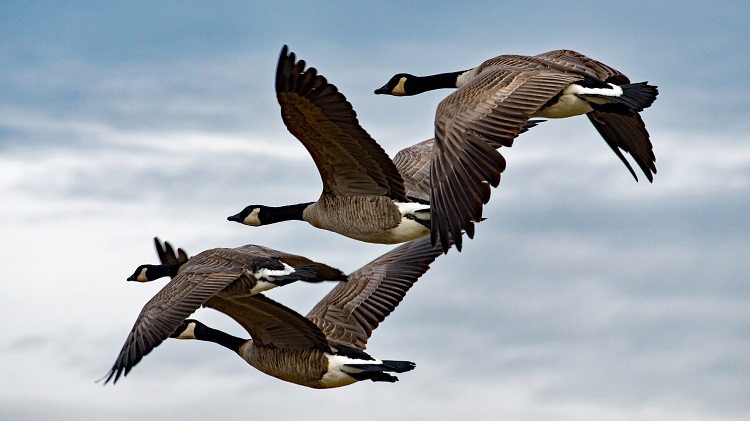
The word goose comes from Germanic languages whose roots gave the Old English words gōs, gēs, and gandres, which have now become the Modern English words goose, geese, gander, and gosling.
But as well as influencing Old English words, the original Germanic word also gave names for the goose in a wide selection of languages, including:
- Dutch: gans
- Frisian: goes, gies, and guoske
- New High German: Gas, Ganse, and Gander
- Irish: gé
- Spanish and Portuguese: ganso
- Finnish: hanhi
What Does a Goose Look Like?
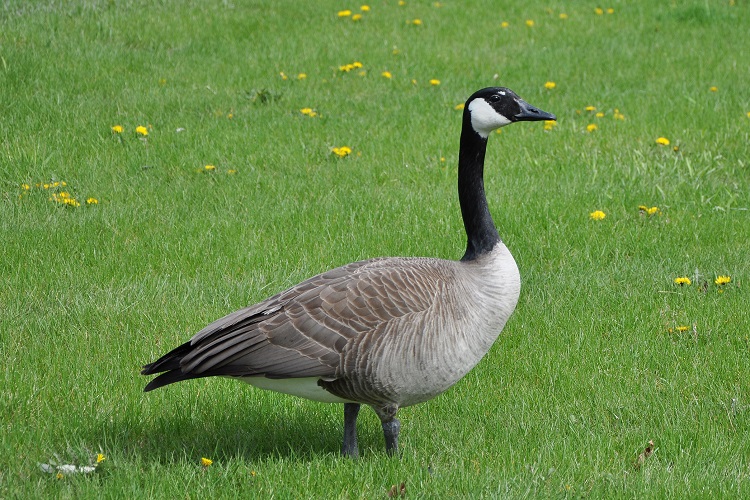
Once you know the characteristics of a goose, they are actually very easy to identify. I know I sometimes struggle to identify bird species because some can look very similar, but the next time you’re out for a walk, look out for these key goose features.
Geese have necks that are shorter than their bodies, and their bill (beak) is humped towards the base and reduces in size toward the tip.
Compared to ducks and swans, a goose’s legs are farther forward on its body, which allows the goose to walk without hesitation, but like other water birds, geese have large webbed feet to help them swim through the water.
The different subspecies of geese are all different colors, but as I mentioned previously, males and females are the same color. The Canada goose has brown feathers along its back, white feathers down its belly, and a black head and neck with a white strip running under its chin.
White-fronted geese are practically all brown-grey in color, with a white underbelly and a white patch at the base of their beak.
Barnacle geese have white faces, black necks, white underbellies, and black and white feathers down their backs that look almost like stripes. The Snow goose is nearly all white in color, but it does have brown flight feathers that run down half of its wings.
Brants have black necks, white underbellies, and brown, grey, and black feathers that run down their back. And the final goose, the Nene, has a black face and brown and black feathers down its body in a striped pattern.
Geese Size
Like many subspecies, the goose subspecies vary in size, with the smallest geese, the Nene, weighing just 2.4 pounds and measuring 53 cm to 66 cm long. On the other end of the scale, the largest goose species, the Canada goose, can measure 75 cm to a whopping 110 cm and weigh up to 24 pounds.
Goose Types
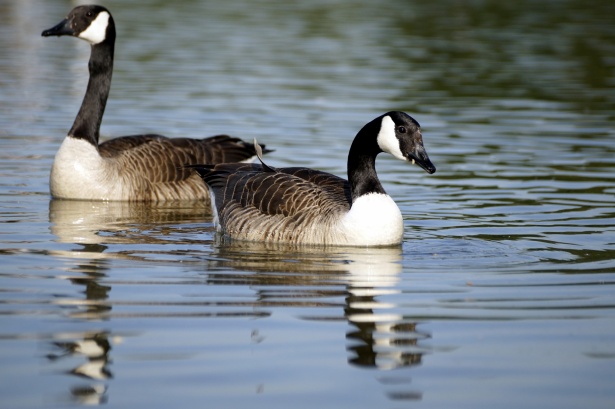
There are many goose species throughout the world, but most mainly live in North America, Russia, and Northern Europe.
Canada geese breed in Canada (I bet you had already guessed that, though) and inhabit many areas in North America, with the largest population of these North American birds living in The Great Lakes region.
Greylag geese spend most of their time in Europe and Asia, migrating south like most birds to warmer climates in the winter.
White-fronted geese also live in North America, with a large majority of them preferring to call west of the Mississippi home.
Barnacle geese nest along the Arctic coasts all the way from northeastern Greenland to northwestern Europe, and the Snow goose breeds in the North American Arctic and Greenland before flying down the Pacific coast to California.
Brant geese inhabit the North American Arctic and Russia, and the Nene, who prefer to live in the tropics, lives in the Hawaiian Islands. And honestly, I can’t say I blame them.
Geese Anatomy
The anatomy of a goose differs between goose species, but all geese have an abdomen, a head, two webbed feet, primary feathers, tail feathers, and a beak.
Other features of a goose include its eyes, ears, neck, breast, back, and wing bow.
Geese and Their Relatives
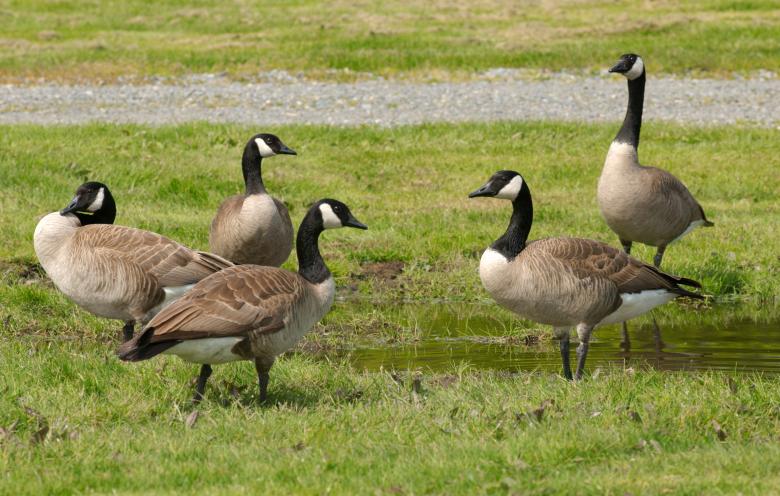
There are two genera of true geese, the Anser and Branta. Anser geese are grey or white geese, and Branta geese are black geese.
Many birds belong to shellducks, despite the goose in their name, but when it comes to close relatives of the true geese, then it’s believed that the Cape Barren goose that lives in southern Australia, the prehistoric New Zealand goose, or the Coscoroba swan are the closest relatives.
Trying to identify geese fossils is no easy task, and in North America in particular, there have been many different true geese species that scientists have identified that date back to 10 million years ago.
Geese Fossil Record
Geese fossils may not be as exciting as dinosaur fossils, but knowing geese have roamed this earth for 10 to 12 million years, seems very impressive to me.
One goose, the Garganornis ballmanni, lived 10 million years ago in central Italy, and when I tell you this goose would have been very different from the species we have today, I mean it.
The Garganornis ballmanni stood one and a half meters tall (almost as tall as me at 5 foot 3 inches) and weighed around 22 kilograms. Its substantial weight and size indicate that the bird would have likely been flightless. But, flightless or not, there is no way I’d like to run into one of those.
Geese Facts
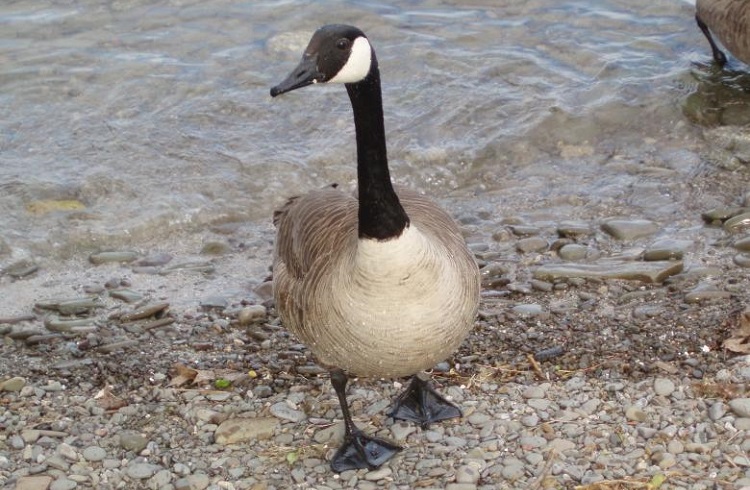
Geese may not often pop up as a person’s favorite animal, but they are an interesting species that deserve more recognition. Here are some fascinating facts about geese:
- If a human (or any animal for that matter) was the first moving thing to get close to a gosling, they would remain dedicated to you and would see you as their parent.
- Geese are herbivores and eat seeds, berries, grass, plants, and nuts.
- Some geese species migrate every year, whereas others stay put.
- If you’ve ever seen a group of geese fly, you may have noticed that they fly in a V shape, and this is because it increases the group’s flying range.
- Although geese are waterfowl, they spend most of their time on land.
- Geese can live up to 20 years.
- Geese are romantics at heart and mate for life.
- If a goose loses their partner or their eggs, it will go into a state of mourning.
Geese Behavior
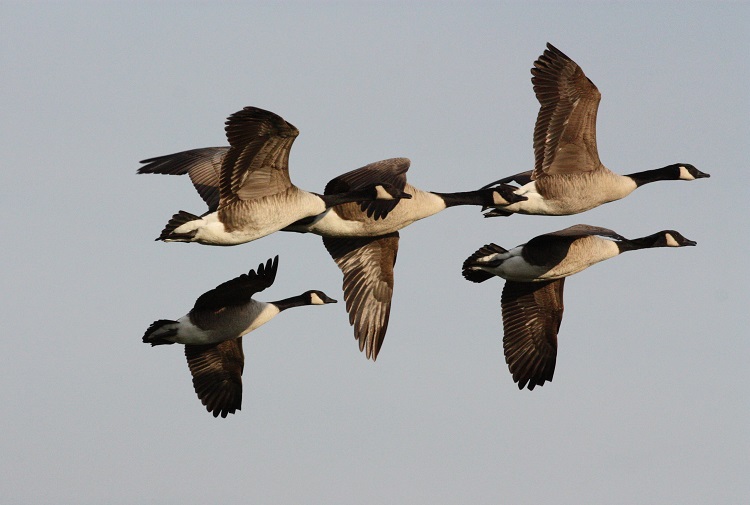
During the mating season, geese can become very aggressive, but that doesn’t mean they should get a bad name. You’d probably be protective too. If a predator were to come close to their nest, a goose would bite, hiss, and chase away the animal, all to keep their offspring safe.
For the rest of the year, geese are social animals who live in flocks with numbers inthousands.
Parenting and Reproduction
Once a goose mates with another goose, they’re mated for life and will live together throughout the year. Aw!
The nesting season is the only time that geese become territorial, and once paired, geese will not only feed more but also become more dominant to produce more goslings.
Geese will build their nests on the ground, and depending on the species, females will lay anywhere from 2 to 9 eggs at a time. For a month after laying her eggs, the hen will then incubate them with her protective partner standing guard close by. Romantic, right?
After hatching, goslings will begin to fend for themselves; however, they stay with their parents for that first initial summer.
Goose Predators
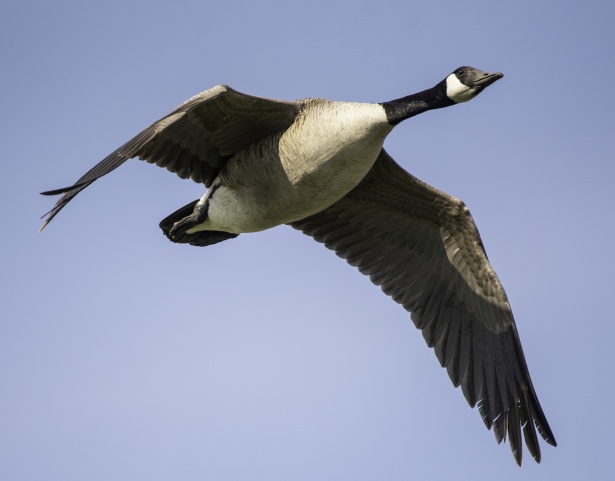
People, coyotes, and bobcats will prey on adult geese, with smaller animals like snapping turtles, foxes, skunks, crows, and raccoons preying on goslings or unhatched eggs.
Geese Migratory Patterns
Not every goose species migrates, one being the Hawaiian goose, the Nene, and that’s completely understandable because if I lived in Hawaii, I would never leave either. But when geese migrate, it’s usually to find better food and water supplies and to escape the cold weather.
I’m originally from the U.K., and I migrated to Bali, where it’s hot all year round, so I can honestly say I don’t blame the geese one bit for ditching the cold weather in search of somewhere warmer.
Preparation
Geese, like other bird species, migrate in the fall, but before they can do that, they need to go through a bit of a makeover. In the summer months, geese will molt, which is when they shed their old feathers and grow new ones that will carry them on their journey.
When geese are molting, they’re unable to fly and usually stay in the water until their new feathers grow to protect themselves against predators.
Aside from growing in new feathers, geese will also eat more before they begin to migrate, as, let’s be honest, flying north to south is a big journey, and they need all the energy they can get.
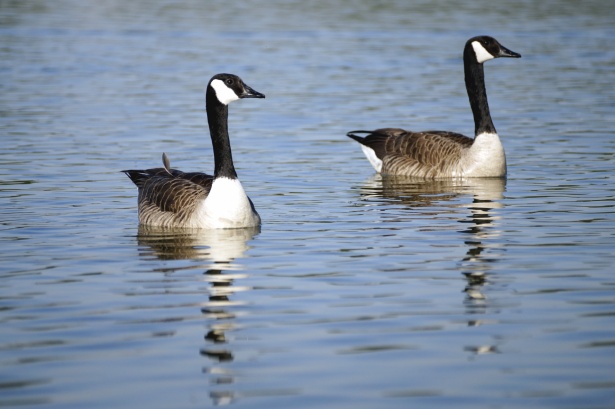
Navigation
Geese are much smarter than you think, navigating their migration by remembering landmarks and using the sun and the moon.
During the trip, geese will take breaks, stopping at landmarks to gain back fat that they lost during their flight. And to give you some context of how far these birds fly, the Canada goose, in a single day, can cover 1,500 miles.
Formation
Geese fly in the sky in a V shape formation to help with communication between birds, to keep track of everyone in the V formation, and to slow down the speed at which they lose energy.
The birds at the back of the V stay afloat by using the pockets of air that the birds in front caused by movement. Each bird will eventually have a turn at the front of the V and will fall back when it gets too tired.
Geese Habitat and Diet
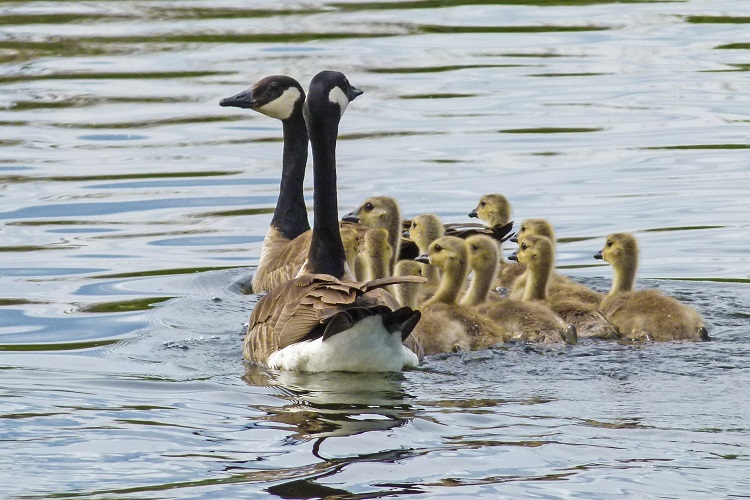
We can find geese all over the world, on every continent except Antarctica. In terms of where geese live, well, they will live almost anywhere, as long as there is a lake, pond, or river nearby.
A goose’s typical diet consists of grass, seeds, beans, berries, roots, and aquatic plants. Occasionally a goose will also eat insects, but they don’t make up a large part of their diet.
Goose Lifespan
In the wild, geese live for 10 to 15 years, but domestic geese who live in captivity can live far longer, reaching the ages of 20 or older.
Which Other Birds Are Called Geese?
Members of the shelduck subfamily, Tadorninae, are called geese, including the Orinoco goose, the South American sheldgeese, the Egyptian goose, and the prehistoric Malagasy sheldgoose.
Importance of Geese in Culture
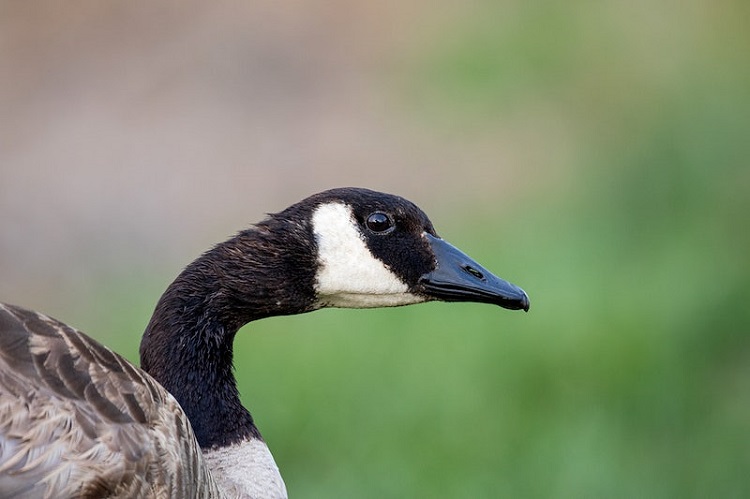
In culture, there are many well-known sayings about geese, and you’ve probably heard quite a few of them. Let’s take a look below.
- “Have a gander” – to look at something.
- “Silly goose” – someone being silly.
- “What’s good for the goose is good for the gander” – meaning something good for one person is good for everyone else.
- “A wild goose chase” – a waste of time and effort.
- “Goose egg” – a raised, round area of swelling on someone’s head.
Iceland’s ‘Gray Goose Laws’
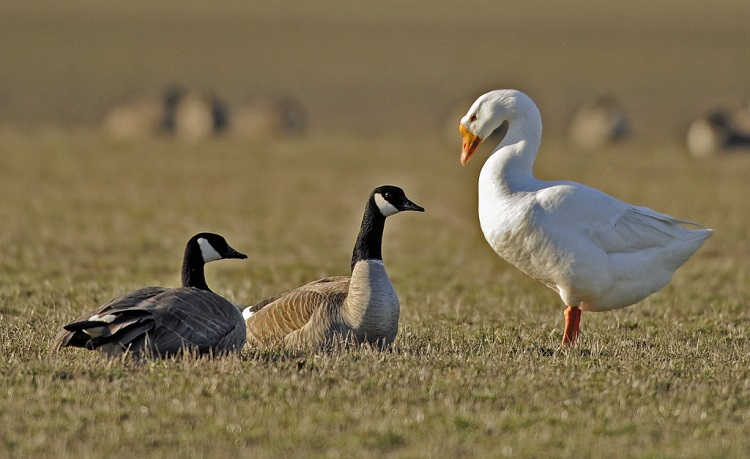
The Icelandic Commonwealth’s oldest law is the Grágás or the Gray Goose Laws because the laws were written with a goose quill, were bound together in goose skin, and because they believed geese were the longest-living birds.
Conservation Status
Birdlife which strives to protect birds and their habitats, lists the goose as not globally threatened, however, the nene, one of the rarest goose species, is endangered as there are less than 2,500 left in the Hawaiian islands.
FAQ’s
Do Geese Attack People?
Geese attacks aren’t a common thing, but geese will attack if people get too close to their nests during the mating season.
How Can I Deter Geese From My Property?
Geese shouldn’t cause a problem to your property, but if they are being a nuisance, then there are a few steps you can take to hopefully send them on their way.
Firstly, ensure that there is no food for the goose to eat. This means getting rid of your garbage and any bird feed. Second, keep your grass cut as short as possible, as geese prefer to nest in the long grass.
Third, set up a scarecrow in your yard to hopefully scare them away. And fourth, if it’s a really serious problem and you have the means, get a dog who will chase the geese away. (Don’t just get a dog just for this reason, though. Only get one if you’re actually dedicated to looking after it.)
How Big Do Geese Get?
Geese are large birds, and the biggest goose, the Canada goose, can weigh up to 24 pounds and measure anywhere from 75 to 110 cm long.
Are Geese Dangerous?
If you get attacked by a goose, it’s very, very unlikely that you’ll die, but they will bite you or hit you with their wings, which can cause injury.
How Fast Does the Goose Fly?
Migrating geese can fly up to 60 miles per hour, especially if they get caught in strong tail wings. Impressive, isn’t it?
Conclusion
The goose may not be as exciting as other bird species, but once you learn all about them, you begin to understand that they’re far more impressive than you first thought.
We hope this post has helped you learn more about the goose, and hopefully, if you come across a goose on your next outing, you’ll be able to pass the information along.


